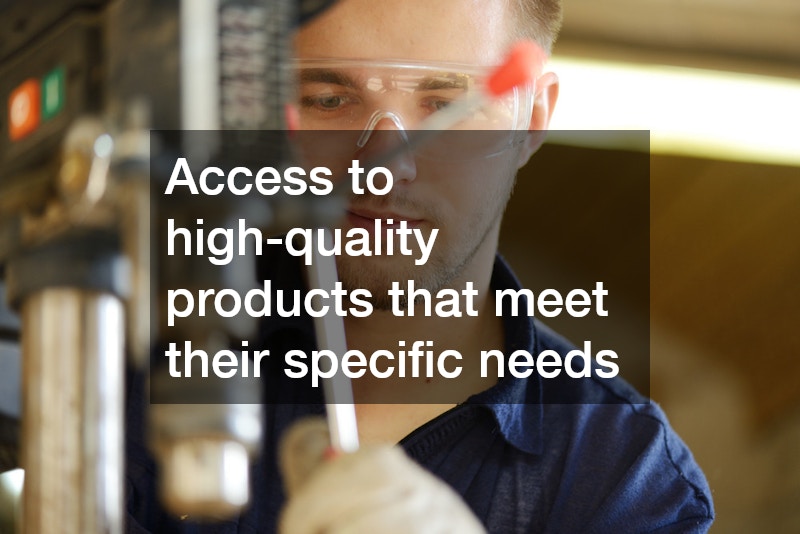Hot melt adhesives, created by quality hot melt adhesive suppliers, are a vital component in many industries for their rapid setting times and robust bonding capabilities. These adhesives form strong bonds quickly, significantly improving production efficiency and reducing downtime.
Whether in packaging, automotive, or electronics, the utility of hot melt adhesives in providing accurate and dependable bonds is unparalleled.
What are the Benefits of Using Hot Melt Adhesives?
Hot melt adhesives offer exceptionally quick bonding times compared to traditional adhesives. This efficiency translates to increased productivity as manufacturers can move products through assembly lines faster. Quick setting times also translate to cost savings by reducing the need for prolonged clamping or holding periods.
As the adhesive cools, it solidifies almost instantly, allowing materials to bond swiftly. This rapid bond formation is crucial in high-speed production environments where time is money. Quick bonding reduces bottlenecks and enhances overall workflow in industrial settings.
Additionally, the fast-setting nature of hot melt adhesives allows for immediate handling of bonded materials. This attribute is particularly advantageous in sectors like furniture and packaging where speed is essential. By mitigating time delays, hot melt adhesives support streamlined operations.
Strong Structural Integrity
Hot melt adhesives are engineered to provide exceptional structural integrity once set. Their durable nature ensures that they withstand stresses and strains over time. This makes them ideal for applications where bonded materials are subjected to dynamic forces.
These adhesives maintain their integrity in varying environmental conditions, lending strength across a wide range of temperatures and humidity levels. Their resilience against temperature changes and moisture establishes them as a reliable adhesive choice. The absence of solvents ensures that environmental factors do not compromise the bond strength.
Furthermore, hot melt adhesives adeptly fill gaps and irregularities in the materials they bond. This adaptability enhances tensile strength and prevents failures under mechanical stress. Consequently, they are suited for applications requiring long-lasting and robust bonds.
Versatility Across Materials
Hot melt adhesives are incredibly versatile, effectively bonding various materials like plastics, metals, and textiles. This adaptability widens their application scope, making them valuable in countless industrial domains. Manufacturers benefit from a single adhesive that can be deployed across multiple processes.
Such versatility stems from the chemical formulation of hot melt adhesives, allowing them to fuse dissimilar materials with ease. This property is crucial for multi-material assemblies in industries like automotive manufacturing, where diverse materials are frequently used. A universal adhesive solution simplifies inventory management and reduces costs.
Moreover, hot melt adhesives eliminate the need for additional surface treatments or primers, simplifying the assembly process. They provide consistent results, reducing variability in production outcomes. Industries embracing these adhesives see efficient production cycles and increased output quality.
How Do Hot Melt Adhesives Work?
Composition and Types
The composition of hot melt adhesives primarily consists of thermoplastic polymers. These polymers are selected for their ability to melt when heated and solidify upon cooling, forming a strong bond. Various types, including EVA, polyolefin, and polyamide-based adhesives, cater to specific bonding requirements in different industries.
EVA-based adhesives are commonly used for their cost-effectiveness and compatibility with a variety of substrates. Polyolefins offer superior thermal stability and chemical resistance, making them preferable for demanding applications. Polyamide adhesives excel in high-temperature environments, offering robust adhesion and flexibility.
This diversity in formulation allows engineers to select the ideal adhesive type for each application. By choosing the right adhesive, manufacturers ensure optimum adhesion and product performance. Tailoring adhesive composition to application needs enhances overall manufacturing reliability.
Application Process
The application of hot melt adhesives involves several steps that start with heating the adhesive until it reaches its molten form. Once liquefied, the adhesive is applied to the bonding surface with precision tools, ensuring consistent coverage. As the applied adhesive cools, it undergoes a phase change to solidify and bind the materials together.
This precise application process creates a seamless bond by adapting to the surface contours of the materials involved. The process is enhanced with advanced tools and machines that ensure uniform application, even in high-speed production lines. Automated systems further optimize application consistency, reducing waste and enhancing production efficiency.
Ensuring optimal bond formation requires vigilance in controlling application temperature and pressure. Proper equipment settings and adherence to application guidelines prevent poor bonding. Industries employing precise application systems elevate product quality and adhesive reliability.
Curing and Setting Mechanism
The curing process of hot melt adhesives involves cooling from a molten to a solid state. Unlike other adhesives that require chemical reactions to cure, hot melts rely solely on temperature changes. This straightforward mechanism expedites the bonding process, allowing immediate handling post-application.
The lack of solvents in hot melt adhesives means that there are no evaporation-induced changes during curing. This feature ensures that the adhesive bond is consistent and free from bubbles or weaknesses. Rapid setting allows for immediate quality checks and faster throughput.
The thermal nature of hot melt adhesives means that they can be reheated for reworking if necessary. This reusability provides additional flexibility in assembly processes, reducing waste. Industries benefit from lower defect rates and the ability to make quick adjustments during production.
Hot melt adhesives, provided by trusted hot melt adhesive suppliers, are indispensable in modern manufacturing due to their quick bonding times, strong structural integrity, and versatility across materials. These adhesives streamline production and enhance output quality by forming rapid, reliable bonds. Embracing hot melt technology optimizes operational efficiency, making them a wise choice for various industrial and consumer applications. By partnering with reputable suppliers, manufacturers can ensure they have access to high-quality products that meet their specific needs and elevate their production processes.
.




